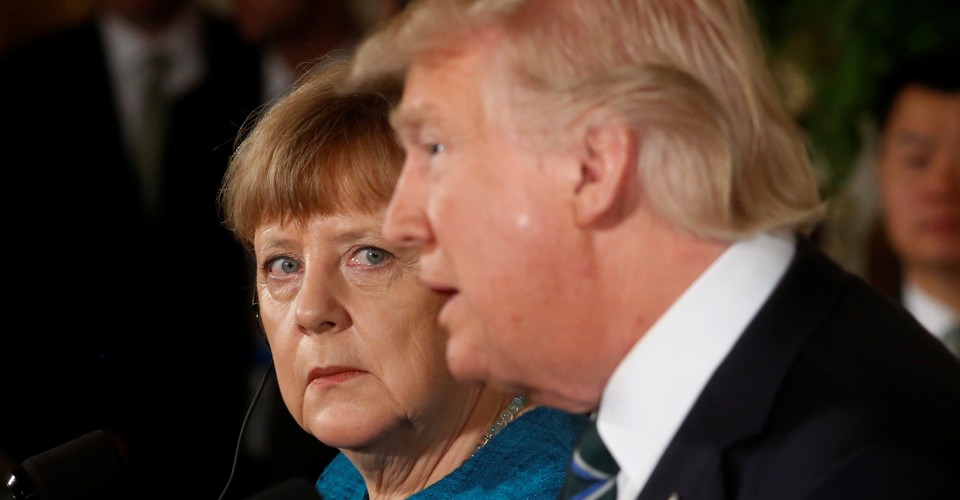mxaxai wrote:I have no experience, obviously. I do expect workload to get quite high if the pilot cannot just focus on one task. Imagine the following:
The fighter close to the frontline, clearly within range of the enemy, is supporting ground troops below him. He is accompanied by three UCAV carrying ordnance. Suddenly, a SAM is launched as he got within the 30 km assured detection radius. More or less simultaneously, a squad of enemy bombers headed for the troops below him appears on the radar. They are accompanied by 5th gen fighters, so the escort is not yet visible on his screen. Only when he appears on theirs can he also get a missile lock on them. Meanwhile, the ground troops are under attack and have called for a strike on the enemy position.
The pilot would have to fly and navigate the aircraft, communicate with the supporting AWACS and his ground forces, evade and possible counter-attack incoming missiles and fighters and also attempt to prevent the enemy bombers reaching their target. Having one upfront who takes care of flying and defensive action and one behind who manages the communication, situation assessment and offensive weapons probably increases the survival and sucess rate significantly.
Your situation also doesn’t make sense. In your situation there is one F-35 against a mountain of adversaries and he alone has to make the decision? You talk of a squad of bombers that have 5th gen fighter escort but the F-35 can’t see the escort, therefore how does he know they are there? How has the SAM been fired without any guidance? You haven’t defined what the UCAVs can do? You haven’t defined if there is a JTAC on the ground who can control the UAVs themselves, or the AWACS controlling them? How is the F-35 configured, for A2G missions or for A2G missions? Why would the ground adversary attack when there are bombers inbound, they would be engaged by their own forces due to proximity?
mxaxai wrote:I'm not sure. All DEW weapons I've seen so far were either short range or far too large and energy consuming to be a viable weapon on small aircraft. Maybe by 2050 or so but not in 5 years. Certainly nothing that can blow missiles and fighters out of the sky from 100+ km away.
Well if you are not sure I would suggest doing some research and finding out before you make comments that don’t match with reality. A recent article,
The Self-Protect High-Energy Laser Demonstrator program is moving through preliminary design reviews for the laser weapon's subsystems and is on track to conduct a low-power system PDR in spring 2018, an Air Force spokesman said this week.
A beam-control subsystem PDR is finished, and Air Force spokesman Jim Fisher said Nov. 9 PDR for the power, cooling and aircraft pod infrastructure will take place in the next few months.
"The beam-control subsystem is close to a final design," Fisher said. "The pod structure, power, system control and thermal subsystems are quickly progressing to a preliminary design. The high-energy laser subsystem . . . design will proceed on a parallel schedule to the low-power system development and flight test. The SHiELD program is completing the interface specifications to ensure all subsystem interconnections are addressed and the subsystems work in concert prior to fabrication of the beam-control and pod subsystems."
SHiELD aims to add a laser weapon to an F-15 in the 2020s to shoot down ground-to-air and air-to-air missiles. Pod integration is slated for fiscal year 2018 with a high-power flight demonstration by FY-21. That effort may soon shift to focus on testing the laser pod on a KC-135 or a mobility platform in the next two years, based on the outcome of studies taking place at Air Mobility Command and the Air Force Research Laboratory.
Boeing is working with Lockheed Martin, which holds a contract worth up to $26.3 million to mature the laser beam, to advance the pod design and plans to complete a preliminary design review in December, Boeing spokeswoman Cheryl Sampson said in an Oct. 27 email. Boeing's Laser Pod Research and Development contract is worth up to $90 million.
Boeing will integrate its pod with Northrop Grumman's beam-control system in phase one of SHiELD and with Lockheed’s high-power laser in phase two. Beam-control development is funded by the $39 million SHiELD Turret Research in Aero Effects contract; the compact, high-power fiber laser falls under the Laser Advancements for Next-Generation Compact Environment award.
"In the development of laser weapon systems, the companies are exploring ways to work together to accelerate the transition from demonstration to fielded capability," Sampson said. "Once the design is completed for SHiELD phase one, Boeing will build the pod and integrate the beam-control system and a low-power laser for initial flight demonstration and testing. Successful flight testing will be followed by integration of the high-power LANCE laser into the pod for SHiELD phase two flight testing."
Contractors will piece together one flight-worthy system that can be used for research and testing but that falls short of the requirements needed to qualify as a system-level prototype. Engineers must design the "fairly large," externally mounted weapon to withstand G-forces, vibration and other aspects of flight, and ensure it can fire well while airborne, Fisher said. The pod connects the laser to its power source inside the aircraft and can be jettisoned in case of emergency.
Fisher said the podded system -- which can be installed onto a variety of platforms -- complicates the design process but would ultimately be more useful.
In a Nov. 7 press call, Rob Afzal, senior fellow of laser weapon systems at Lockheed, said the laser's power will be "tens of kilowatts" but declined to provide specifics. Lockheed's challenge is to shrink the laser's size and energy needs while retaining enough power to defend an aircraft.
"We're the last contract of the three and therefore we have to match the interfaces of the beam-control system and also on the pod infrastructure, just literally the locations, how you would actually load it into the pod, if there are any obstructions, and then very importantly, how best are we going to mate to the power and cooling system?" Afzal said.
He continued: "Because we understand the physics and engineering of these high-power fiber lasers and we control the design all the way from electric power input to laser photons output, we are able to customize the packaging of the fiber laser system so it can mate best to our partners on STRAFE and LPRD."
Expertise from earlier laser design, infrastructure and test efforts like the airborne laser and advanced tactical laser programs allow SHiELD to rapidly develop subsystems and quickly decide how each part should work together, Fisher said.
"The program is utilizing a rigorous systems engineering process including documenting trade studies, tests, modeling and analyses that inform decisions, to include a repository of lessons learned," Fisher added. "The SHiELD system is being built for demonstration purposes and will not be an operational system. However, the program still has to meet multiple subsystem- and system-level requirements that address reliability, maintainability and potential for reproducibility."
https://insidedefense.com/daily-news/la ... t-head-pdrThe intent is defensive for starters but will move towards a more offensive role as the power increases. No one is talking 100km+ range and no one has mentioned it. The power currently is the tens of kilowatts, plenty good enough for self-defence. As we move above 150 kW with the ideal above 250 kW the laser system will become effective at a decent range for both A2A and A2G.
mxaxai wrote:The BUK operators had a fairly advanced system in their hands and still shot down a 777.
Really? What system was it? What battlefield communications network was it associated with?
mxaxai wrote:The Aegis system aboard the Vincennes identified the A300 as an F-14. Systems may get more advanced but they are not perfect. The only way not to potentially kill hundreds of civilians is to perform a visual check, or at least get close enough to see unmistakeable signs.
Sorry no that is simply an unjustifiable claim. We have moved far beyond visual identification being required. The sensors, systems and data-link networks so much better now and will continue to improve.
mxaxai wrote:There is trust but it is not enough for either party to disclose their secrets to each other. Germany is subject to ITAR. Even civilian cooperations in space (between NASA and ESA) are difficult. Most research results are not open source, or at least open to allies. Obviously there is an economical reason for that, protection of intellectual property. Meanwhile, the relationship is quite unbalanced. The US export much more military goods to Germany than vice versa. When Airbus was on the verge of selling the A330MRTT (KC-45) they rather had Boeing develop a new KC-46. The only way for Germany - and the US - to gain experience and knowledge about advanced weapons is to participate in the development themselves.
Again, the US and Germany have a long and established security relationship. The respective militaries share classified information. When a nation signs up to an FMS acquisition with the US they receive the technical documentation required to operate, maintain and tactically employ the respective system.
mxaxai wrote:Another point I'd like to make:
Currently, the F-35 is the only internationally sold stealth jet. This will likely change over time. Eventually, even smaller militaries will be equipped with the technology.
So what other jet will be available on the export market in the next 25 years that will have equivalent capability to the F-35?
mxaxai wrote:Let's assume a conflict F-35 vs F-35. Both jets will need to get quite close to each other to use their missiles (or cannons) but since they are equal the result is not related to the aircraft.
Why are we considering this?
mxaxai wrote:Now assume a purpose built stealth fighter, like the F-22, as adversary. The F-22 will be more maneuverable and have more opportunities to launch missiles, with the F-35 likely loosing the encounter. You would want to escort the F-35 with a stealthy fighter, which is not under development yet.
How is the F-22 a purpose built stealth fighter and the F-35 isn’t? The USAF have stated that the RCS of the F-35 is lower than the F-22 and the F-35 radar has already demonstrated the ability to detect and jam the F-22 radar.
mxaxai wrote: Maybe the japanese X-2 could work, or the new european jet. Maybe we could combine all three. Perhaps the new jet will replace the Tornado and the Eurofighter replacement will be US-made.
Read the other threat, the Japanese X-2 is now in limbo and I expect the Japanese to go all in on the F-35 over the next 5 years. We’ve already gone over that the new European jet intent is to replace the Eurofighter and Rafale, not the Tornado.
mxaxai wrote:At no time in history has NATO relied on a single fighter. They had their reasons and they have not changed with the arrival of the F-35.
What reasons? Plenty of nations now operate a single fighter jet fleet and even the USAF goal is to move to a two type fighter fleet, with the F-35 ten times more numerous than the F-22. While I don’t see any moves towards a single NATO fighter aircraft there would be significant operational and efficiency benefits from doing so.





